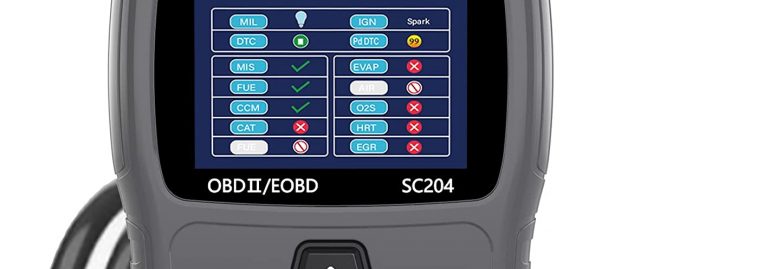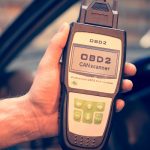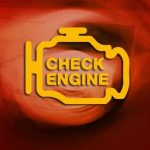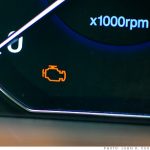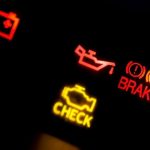Before you get started with your check engine light diagnostics, you must first understand what each code means. Then, use a free computer code reader to help you understand them. By using a free computer code reader, you can easily diagnose any problems your car is experiencing. To get started, download this tool, and follow the instructions. You’ll soon understand why you need it and how to use it effectively. In this article, we’ll explore each code and explain what it means.
Codes
When you see a code that starts with “P” and continues with “X,” your car is experiencing a problem. This could be a number of different issues, including a malfunctioning transmission or a failed sensor. In either case, the code indicates that your vehicle needs a repair. To figure out what the problem is, you must first determine what it means. There are two basic categories of check engine codes.
An Active Code is an error that caused the Check Engine Light to come on, while a Pending Code is one that has already occurred and will become an “Active” code if it occurs again. These two types of codes provide you with the specifics of the problem that is causing your car to stop working correctly. Once you know what they mean, you can start researching a solution. And don’t forget that there are also several different methods of diagnosing these problems.
Fuel mixture ratio is another one of the more common problems with vehicles. The code P0300 will show up if you have numerous misfires or a random number of misfires. If this is the case, you need to fix the problem before it leads to a costly repair. It’s best to consult with a professional mechanic to ensure that the problem isn’t a more severe problem. When it comes to cars, you need to understand that these codes are only there to help you find the best solution.
Your car’s computer is a sophisticated piece of hardware that manages your car’s engine. It communicates with your vehicle’s warning lights and other components via a diagnostic code. In addition to a dashboard warning light, the car’s computer also sends a message via the Malfunction Indicator Lamp. These codes give the technician a starting point for diagnosis. If you need to fix your car, you must know what code to read.
In addition to the generic codes, the OBD code system also has manufacturer-specific codes. For example, P1220 on an Audi vehicle is different than P1220 on a BMW. Each OBD code is associated with a different part of the vehicle. In general, P1220 denotes the powertrain. While B1220 stands for body parts, C1220 denotes the chassis, steering suspension, and braking.
A diagnostic trouble code (DTC) is a series of five letters and numbers that the OBD system generates whenever a malfunction is detected in the vehicle. These codes are important for the diagnosis of your vehicle and will save you countless hours of frustration. You can find out what the problem is with a free online decoder. The Society of Automotive Engineers publishes a manual for vehicle owners. If you are not a mechanic, you can use an OBD code reader to diagnose your car and make the necessary repairs.
Meaning of codes
What do the different types of codes mean? These codes are classified according to the system they relate to. Codes that indicate problems in the engine or transmission are generally classified as “powertrain” codes. Other codes may indicate problems in the body or chassis of a vehicle. A professional scan tool may be necessary to diagnose non-powertrain codes. The code you receive will tell you which system needs repair. However, the meaning of the code is often dependent on the manufacturer of your vehicle.
Codes with a 0 for their second digits are universal. These codes are used in most vehicles that are built to the OBD2 standard. They can be assigned a common fault message. Manufacturer-specific codes (MILs) are unique to a particular car model. If these codes occur, your mechanic may need to replace your catalytic converter. However, there is a broader range of possible problems with these codes.
Diagnostic Trouble Codes (DTCs) are five-digit strings of numbers generated by your car’s on-board computer. They correspond to a specific problem within the car. Whenever an issue is detected, the car will send a diagnostic trouble code. The trouble code will tell you the source of the issue and what needs to be fixed. Using a check engine decoder can help you identify which codes are related to which system.
There are a variety of reasons for your check engine light to come on. By understanding the codes and their meaning, you can identify the exact problem. A car that is experiencing this issue is experiencing a malfunction, and it is vital to get it fixed. It is vital to understand the codes to ensure safety. When your vehicle is experiencing any kind of malfunction, the check engine light will illuminate. This is an indication of a malfunction that needs immediate repair.
One example of a code is P0175, which tells you that your engine is too rich. The exact cause of system richness will depend on your car’s engine’s model and manufacturer. It could be due to a misfire in multiple cylinders. This problem can be caused by a number of things, but your mechanic will know what to look for. This code can be confusing, but it doesn’t have to be.
Pending codes indicate that the emissions control system is malfunctioning. If this happens again, the Check Engine Light will illuminate. In most cases, you need to replace the part. If the problem is serious, you should contact a professional for further assistance. The best way to diagnose this problem is to read the check engine decoder manual that came with your car. There are several ways to diagnose the problem and get the right repair.
How to read codes
If you own a car, then you’re probably wondering how to read check engine codes with a check-engine-decoder. OBD (On-Board Diagnostics) codes are the starting point of a diagnostics procedure. They indicate what part of the vehicle is experiencing a problem, but they do not give you specific information about what caused the problem. Many times, codes can be generated by temporary problems, such as a loose fuel cap or a poor connection to sensors. You can learn how to read these codes with a check engine decoder by using an online tutorial.
The first thing to remember is that there are two main kinds of codes: manufacturer-specific codes and generic codes. P0xxx codes apply to all make and models, while P1xxx codes are specific to one particular manufacturer. A code that starts with P0 indicates a powertrain issue, while one that starts with a “1” is a problem with a transmission or fuel system.
Once you know what code your car is sending, you can start investigating the problem. You can choose to repair the problem or simply reset the check engine light. It’s easy to do with a check engine decoder and a smartphone app. Once you’ve determined the cause of the problem, you can proceed to repair the problem. But remember, diagnostic trouble codes aren’t always wrong – most of the time, they’re there for a good reason. You need to fix the underlying problem before you reset your car’s check engine light.
An OBD decoder is a handy tool to diagnose any vehicle problem. OBD-II codes are used to identify vehicle faults. The OBD-II code is the most common type. A check engine decoder will give you the exact code and let you fix the problem yourself. But you’ll also be able to view any other codes that may be present. This is an important tool to have on your car if you want to fix a problem on your own.
Using a check engine decoder will allow you to see the codes that are causing your car’s Check Engine light to flash. These codes are short and long blinks and represent a number. Long blinks indicate a 10 while a short blink means “1”.
To use a check engine decoder, you’ll need to find your vehicle’s OBD-II port. Generally, this port is located under the dashboard on the driver’s side. Other vehicles have this port on the center console. A simple hand-held scanner can display a list of codes and a quick search on the Internet can help you determine what code you need to fix.


